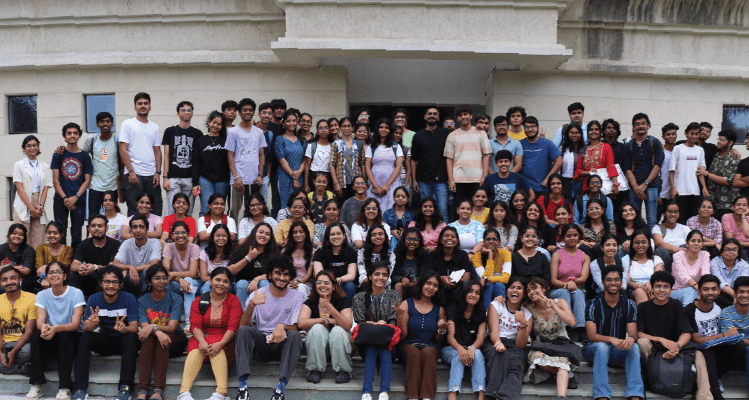Designers are primarily eccentric creatures and there is only one thing that can give someone a peek in their minds, the portfolio. The portfolio is the representation of their creativity, thought process, hard work and the approach. It’s not just about the number of projects, it’s about the thought process behind it.
Less is more, and rightly it is. “An impressive powerful portfolio is better than a long boring portfolio”, says our speaker Pankaj Dhamane, the General Manager at Renault Design Center. He served as the Deputy General Manager, Assistant General Manager, and Senior Manager at Renault. He was also the Senior Manager Design at Maruti Suzuki India Limited, Consultant at Knowtran Engineers, and the Section Manager at Bajaj Auto Ltd.
Employers screen through a portfolio for not more than 60 seconds. An impression needs to be etched in that time frame. And to make a strong and powerful impression, 10 to 15 pages of quality work is much more effective than a portfolio with 40 pages of quantity work. An element of interest — that is what compels the employers to revisit the portfolio.
Put nothing but the best of your works. Average quality work must be discarded because as they say, the first impression is the last. If someone happens to see your work which is poor and raw, even if you improve on your designs, it’s going to take a long shot for them to revisit your portfolio.
“Be careful about the quality of work you put on social media. Once it’s gone, it’s gone,” says Pankaj.
‘Redo’ is a practice everybody is accustomed to and as much as we hate it, redos are essential. As designers, we tend to fall in love with our designs. This stagnates the growth and hence it is important to constantly update and improve the portfolio. Turns out criticism is good for health. Spoiler-alerts revealing the climax too soon can be as annoying as jumping to the final product without showing the process. The flow of the project is of the essence. The doodles, thumbnails, and explorations show the student’s ability to come up with diverse solutions quickly. The Industry is more concerned about your thought shower and skills although research and the outcome are also important. At a student-level, the market viability and technical feasibility of the product don’t matter much. Connecting virtually was unimaginable in the past but you reading this blog proves it wrong. Technology over time can make the impossible possible.
Presentation is the key. Where to see must be clear. The font size, line spacing, and proportions will be judged.
Pankaj says, “Careful selection of fonts and layout proportions is important. This is the most neglected part but it is important to make an impression.”
The contrast in the background can help in highlighting the actual content. Also, the arrangement plays its part, everything need not be bang in the center. A visually well-balanced layout can work wonders.
Cover photos may end up giving too much information by revealing the final product itself. One way to keep the curious cat awake is to show a zoomed-in view of the product as the cover image and unveil the entire product in the project in a smooth flow.
Although we need to think out of the box to generate diverse concepts, the presentation must be in a box. In other words, the fonts used must align with your concept, the layout used and the information put up must also align with your concept.
Employers don’t have memories of goldfishes, they see, they remember. This makes it even more crucial to make a strong impression. The first impression is the last impression.
Esha Mehta
